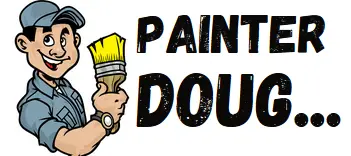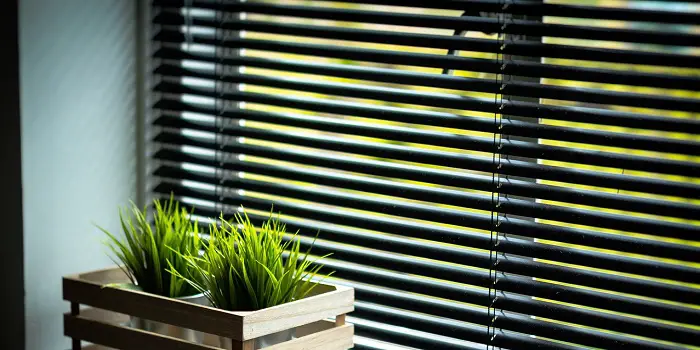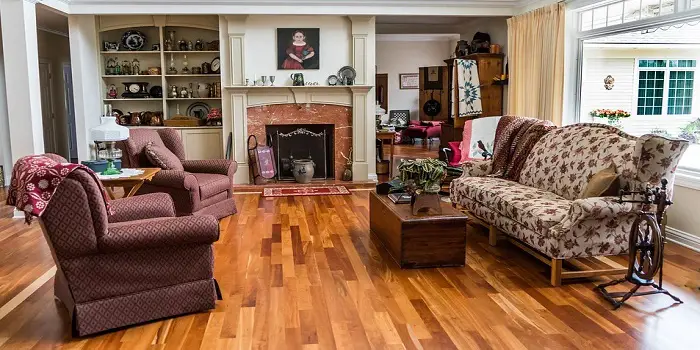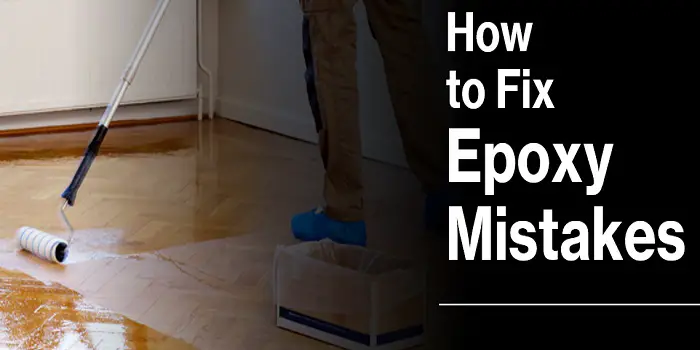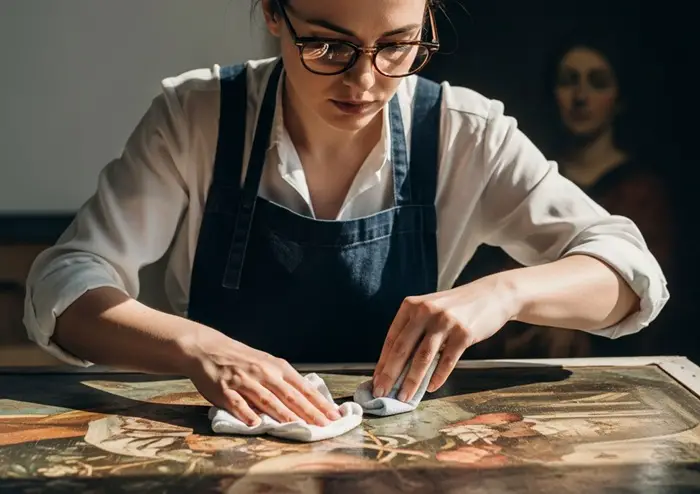
Over time, it is likely that a canvas painting will be exposed to smoke in some way, whether that is from cigarette smoke, being placed near a fireplace, or after surviving a house fire. No matter the type of smoke or the source of it, smoke can leave behind bad residue on the painting itself.
If your canvas painting has smoke or mold residue on it, there are a few things you can try to use to clean the painting before taking it to a professional.
If it is acrylic or oil, or anything in between, you should always be using a soft cloth or soft bristle paint brush to get rid of the smoke or dust on the top layer. Use light touches and be gentle with the canvas to make sure you aren’t leaving anything behind.
Below, I will offer some tips on how to keep your expensive canvas paintings clean without damaging them. Keeping your canvas art clean will improve its durability and allow you to enjoy it as it was meant to be enjoyed for years to come.
What's Here in the Article:
Method 1: Using Air and Brush to Clean Acrylic Painting
Acrylic paintings will gather much more dust and grime than other paintings. So, you will need to clean them more often. Here’s how to do it.
Items you will need:
- The small amount of water in a bowl
- Can of compressed air
- Fiber cloth or soft bristle brush
How to clean:
- Place your painting down on a flat surface.
- Use the can of compressed air to blow away the dust that is on the painting.
- After using the compressed air, if you think it needs more work, you can use the soft bristle brush paired with soft strokes to remove the dust.
- After this, if you believe a more intense cleaning method is important, you can use a fiber cloth and some water. Barely apply water to the cloth, and then lightly clean the surface of the painting with a gentle touch.
Do not get it too wet, and do not scrub the surface, as this may cause the formation of bubbles. The wet cloth can also shrink the canvas.
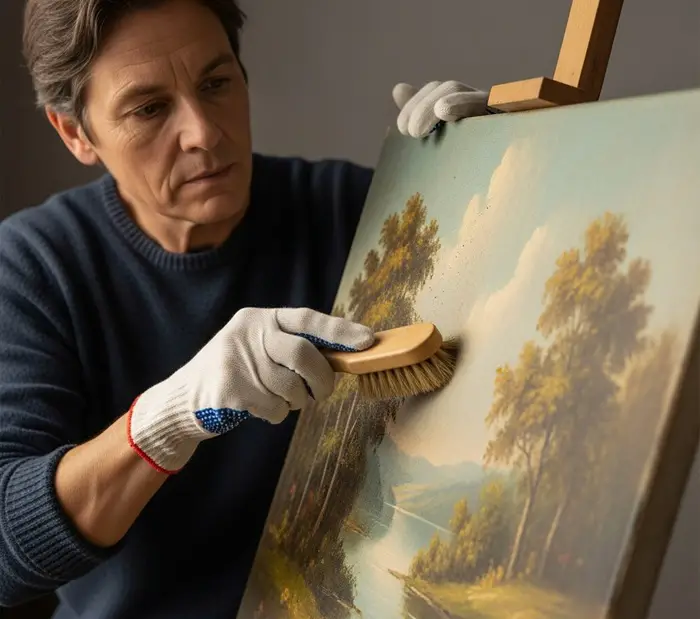
Method 2: Using Saliva to Clean Your Old Canvas Oil Paintings
Oil paintings can be cleaned in less traditional ways than acrylic paintings.
You could use the method above for cleaning acrylic paints, or you could use the saliva method.
Though unconventional, wikihow.com, in their article, suggests that saliva is much less harmful than many of the soaps out there when it comes to cleaning.
It has a certain enzyme in it that is usually used to break down infections and foods that is actually good for cleaning paintings as well.
Items you will need:
- Saliva
- Cotton swab
- Clean hands
How to clean:
Be sure that you clean in small sections for the best results. Since you will be doing this, be prepared that it can take some time. Stop the process immediately if you notice any paint on the swab.
- Put the cotton swab on your tongue to get a little saliva on it, being careful not to make it too wet.
- Rub the cotton swab over the painting to clean it off.
- Do the same with the opposite end of the cotton swab.
- Repeat this process as often as needed until the painting is cleaned to your liking.
Method 3: Using Olive Oil, Soap, and Water to Clean Old Canvas Paintings
Although it is possible to buy specialized canvas cleaners, olive oil soap is a gentle and effective alternative to cleaning your old canvas paintings and pictures.
You can use this cleaning and caring method for oil and acrylic paintings.
Items you will need:
- Water
- Soft cloth
- Q-tips
- Olive oil-based soap
How to clean:
- Simply mix a little soap with lukewarm water and use a soft cloth to wipe down the surface of the painting.
- You may need to use a bit more elbow grease for particularly dirty paintings, but be careful not to scrub too hard, or you could damage the canvas.
- For vintage paintings that have thick impasto, be extra careful and gentle. Using Q-tips might help, but be sure to work gently in crevasses.
- You don’t want them to lose any of their texture or appearance.
- Once you have finished cleaning, leave it to dry. Your painting should now be clean and free of dirt and debris.
Related FAQs
Can I clean an oil painting with bread?
As surprising as it sounds, white bread with a spongy center is good for lifting smoke residue from a painting. Be sure that you use gentle pressure, as you do not want to press too firmly and cause any crumbs to come off and stick to the painting.
How can I store my canvas paintings at home?
To store your expensive canvas paintings at home, I would suggest investing in a stacking art storage system that will hold multiple canvases. These are available in various sizes and can be customized to fit your specific needs.
Canvas paintings should never be stored on the floor or leaning against a wall, as this can damage the canvas and the paint. Be sure to wrap each canvas in acid-free tissue paper before placing it in the storage system. You may also want to consider using archival boxes for long-term storage. Archival boxes are made from acid-free materials and provide an extra layer of protection for your valuable paintings.
How much does it cost to have a painting cleaned by a professional?
The cost of professional painting cleaning can vary depending on the size and condition of the painting, as well as the type of cleaning required. For example, a simple surface cleaning may only cost a few hundred dollars, while a more complex restoration project can easily run into the thousands, especially if they need a premium restoration kit.
In general, it is best to consult with a professional art conservator to get an accurate estimate of the costs involved. However, as a general rule of thumb, it is safe to say that professional painting cleaning can be quite expensive. You should invest only if you are confident that the painting is valuable and worth the investment.
The Conclusion
Much like any other kind of artwork or decor, eventually, dust, dirt, and smoke are going to make your canvas artwork dirty.
There are a few different ways that you can clean a painting, but the method you use depends on the kind of painting it is. Also, depending on the amount of cigarette smoke or dirt on the painting, there are ways to take care of the work. So, you will first need to look closely at the canvas to figure out which technique to use for the project.
If you do not feel comfortable cleaning the painting on your own, there are art galleries and other professional services that can help you out. It is always best to seek professional help rather than being unsure and possibly damaging your antique artwork.
Share the post "How to Remove Smoke Residue from Canvas Painting?"
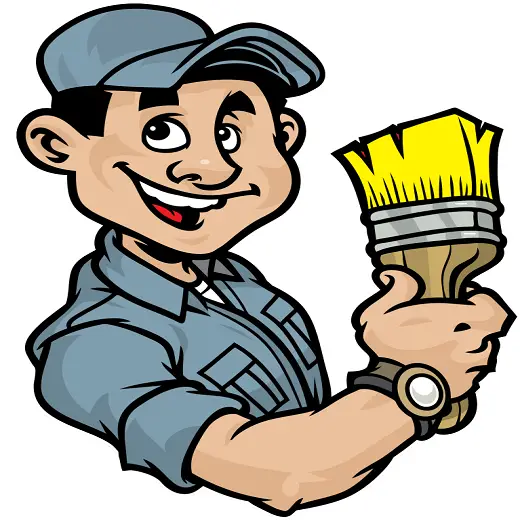
Douglas Becker (aka Painter Doug) has over twenty years of experience as a painter in Adkins, Texas. At present, he resides in Florida with his family.
From painting multi-storeyed houses, condos, and apartments to large commercial buildings and small offices, he had served various customers in areas not only in Adkins but also in Southwest Florida, Sarasota, Naples, and many more. To know more about him check here.
